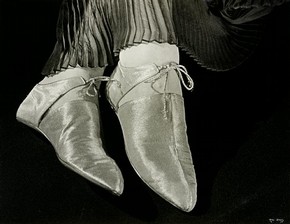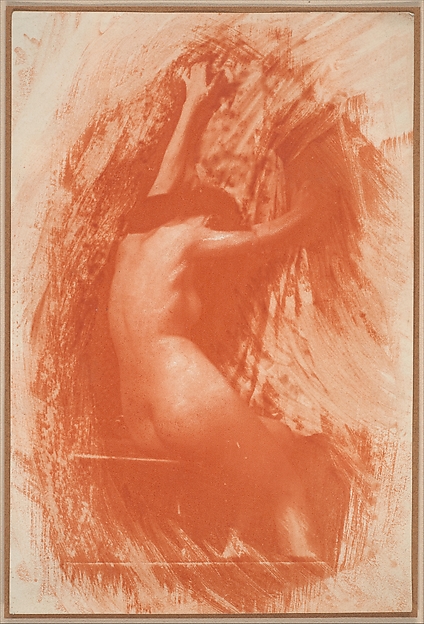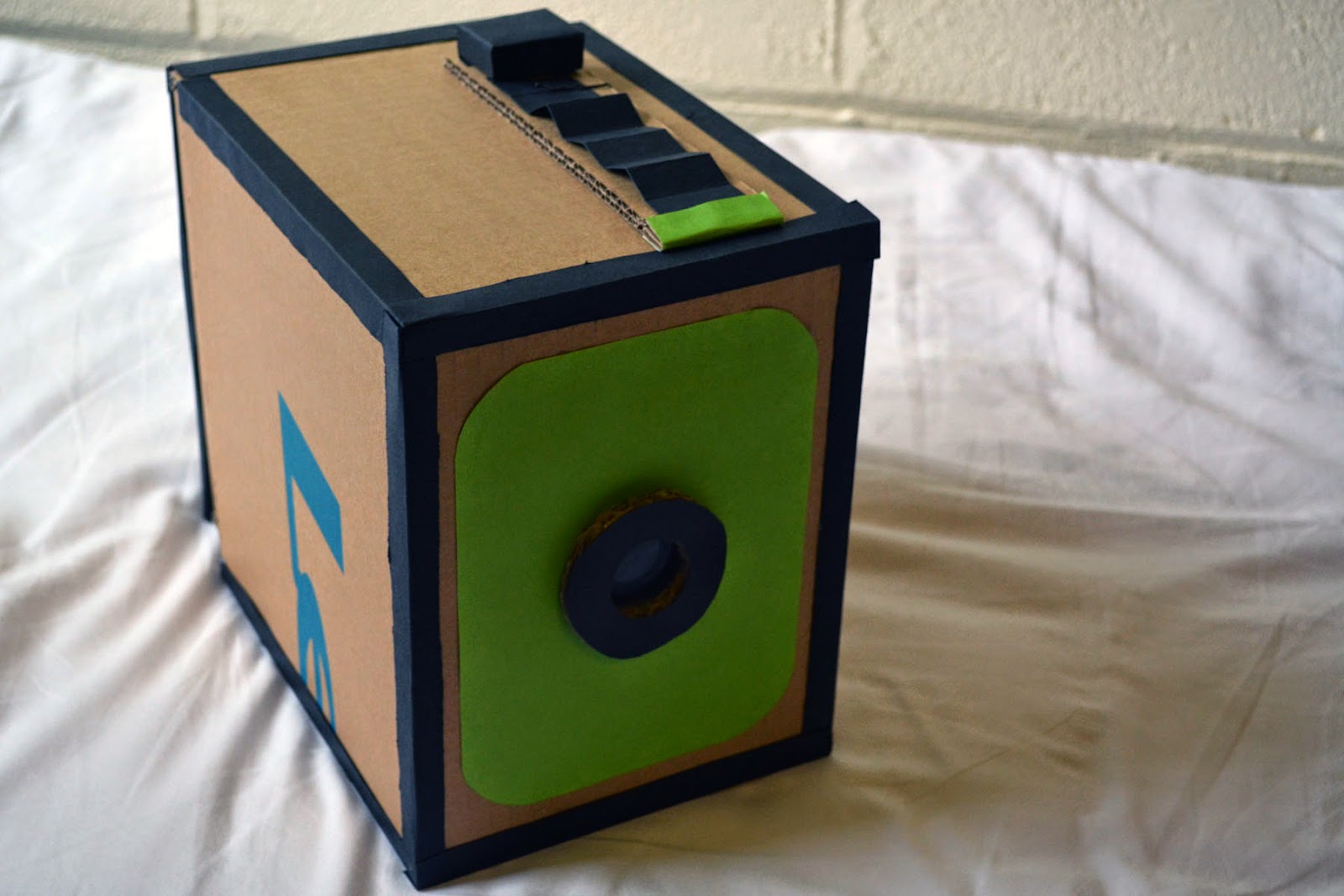 |
| Camera Obscura Box |
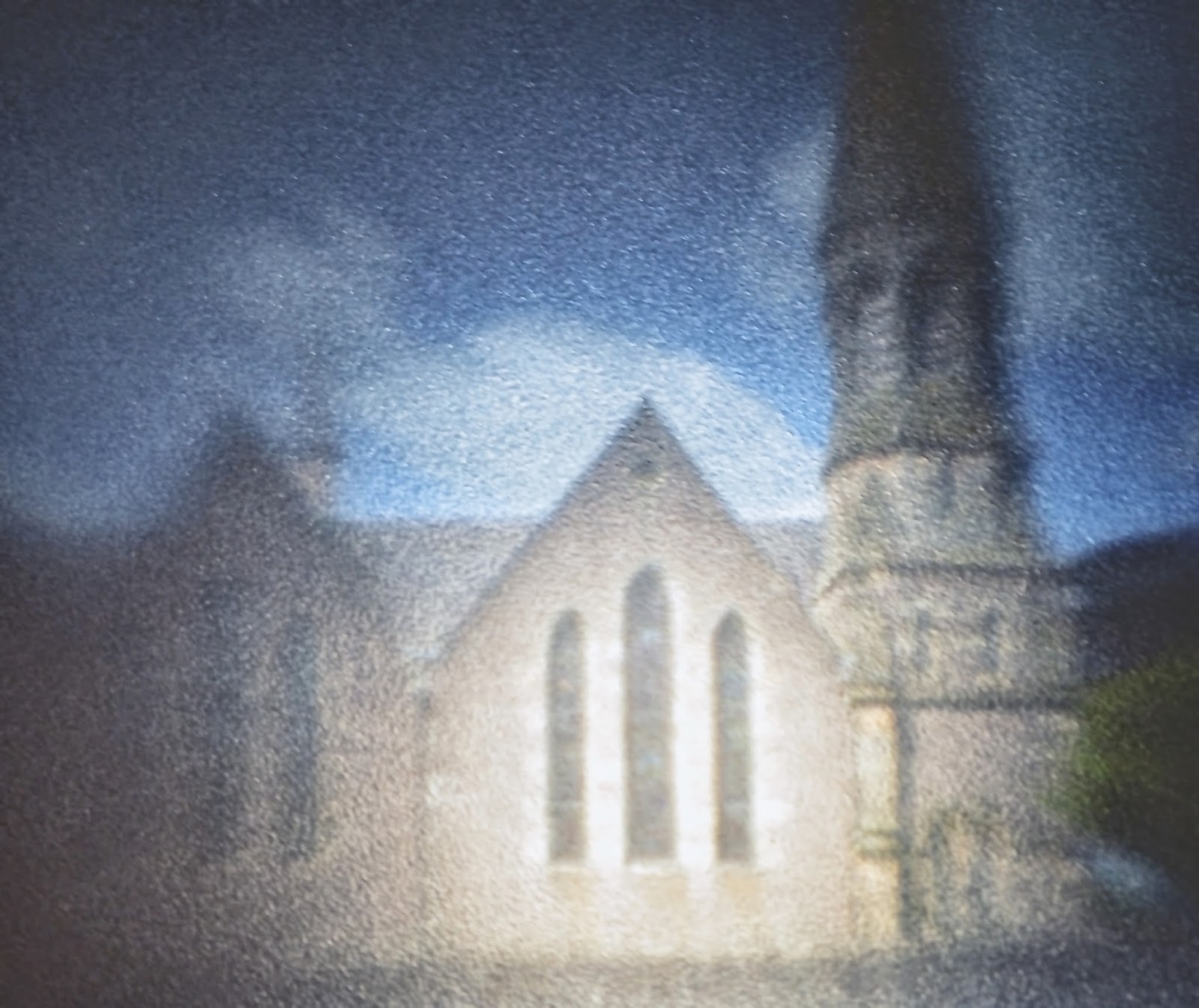 |
| Bridge of Allen Parish Church |
 |
| Bridge of Allen Residences in Red |
 |
| Victorian Residence with Bay Windows |
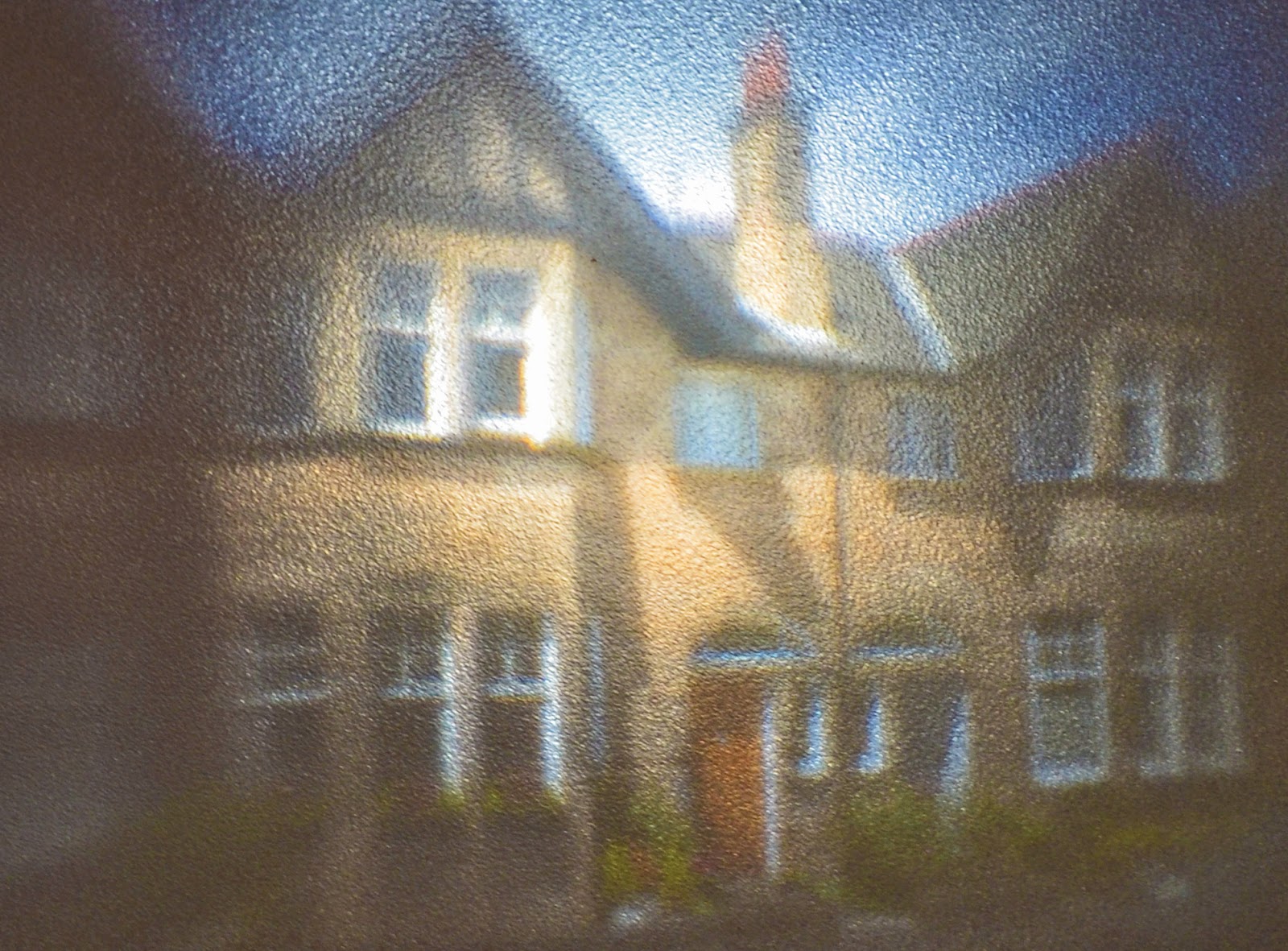 |
| Gabled Roof Victorian Style Residences |
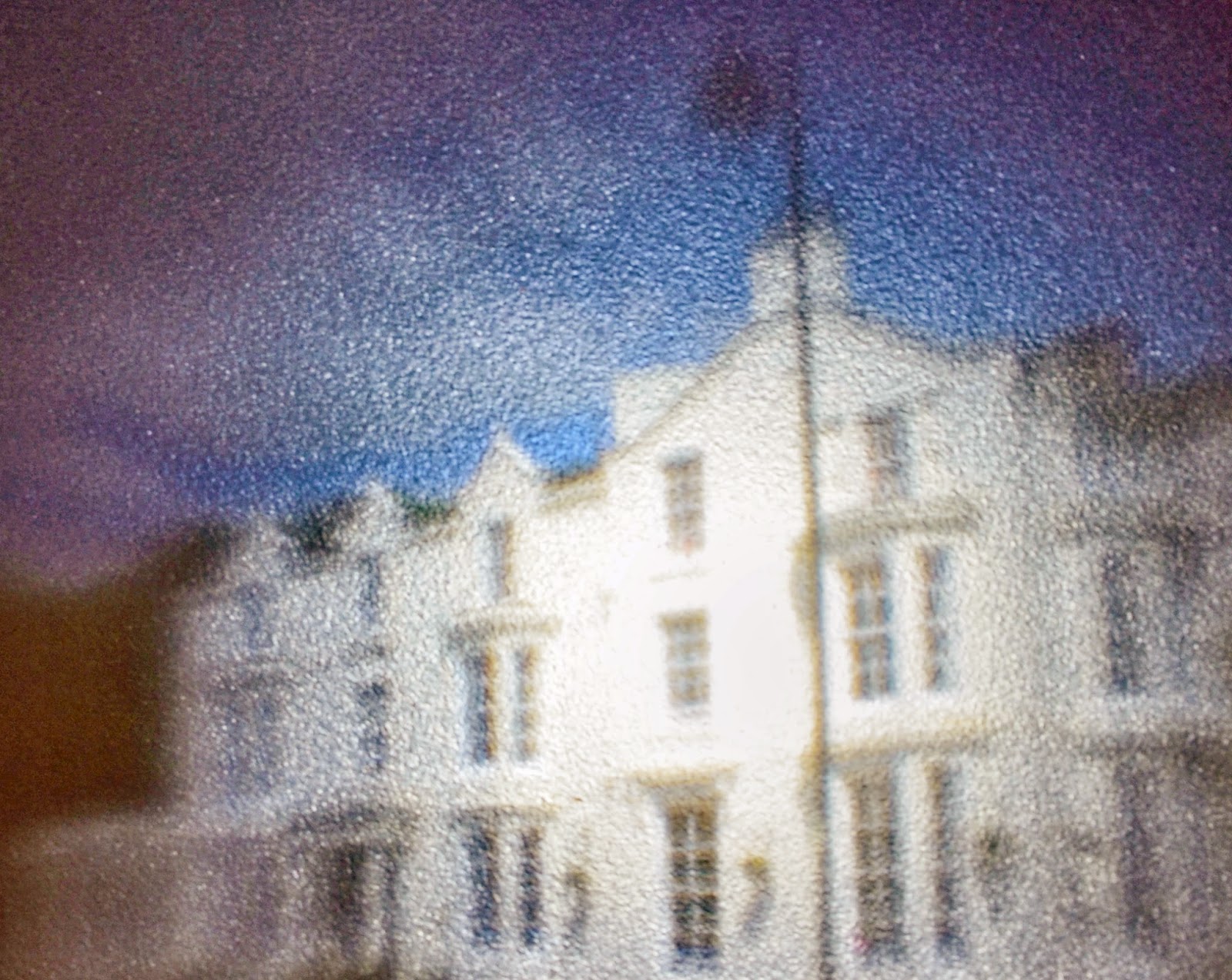 |
| Front View of the Royal Hotel |
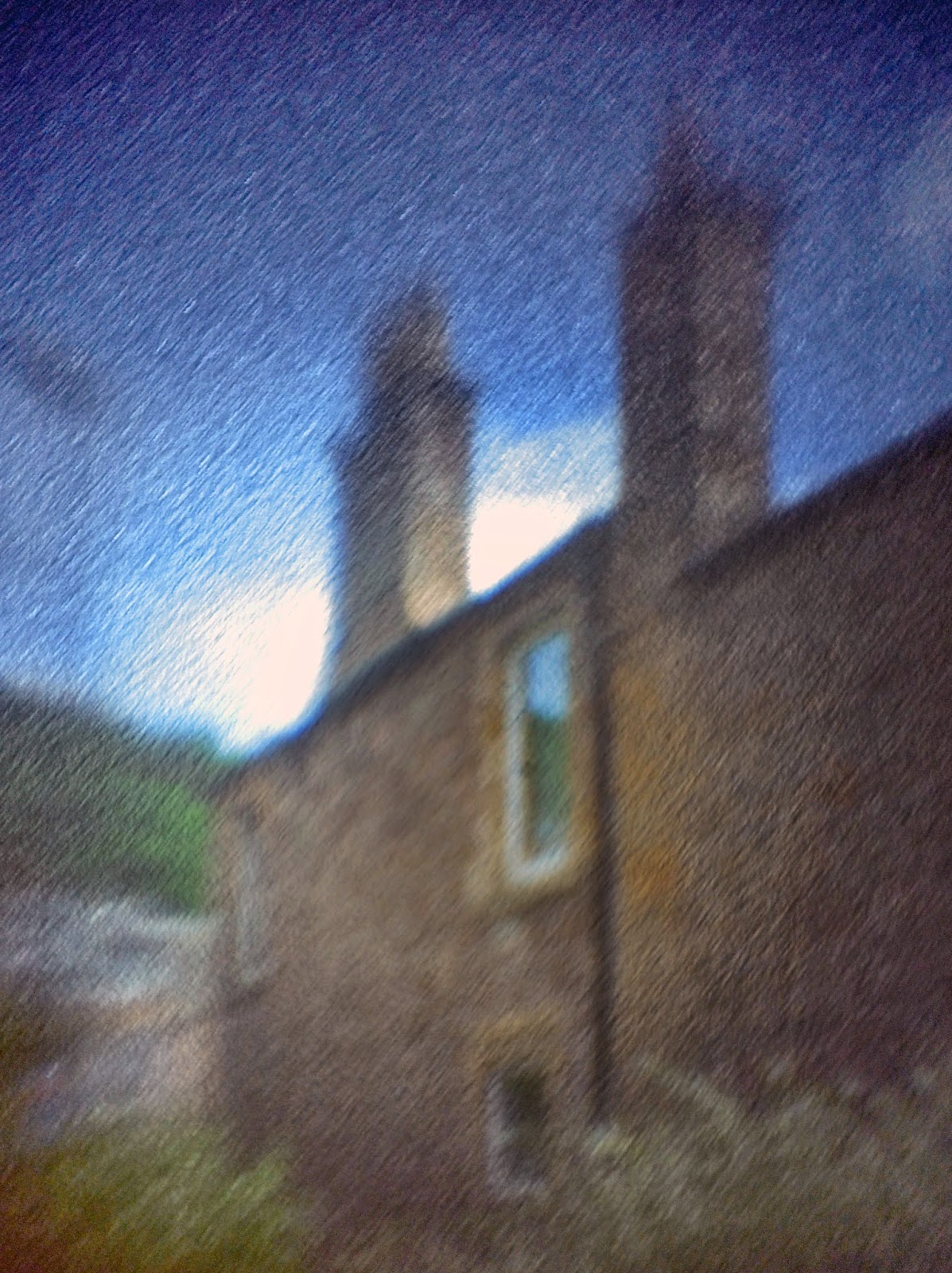 |
| Stone Towers and Wall |
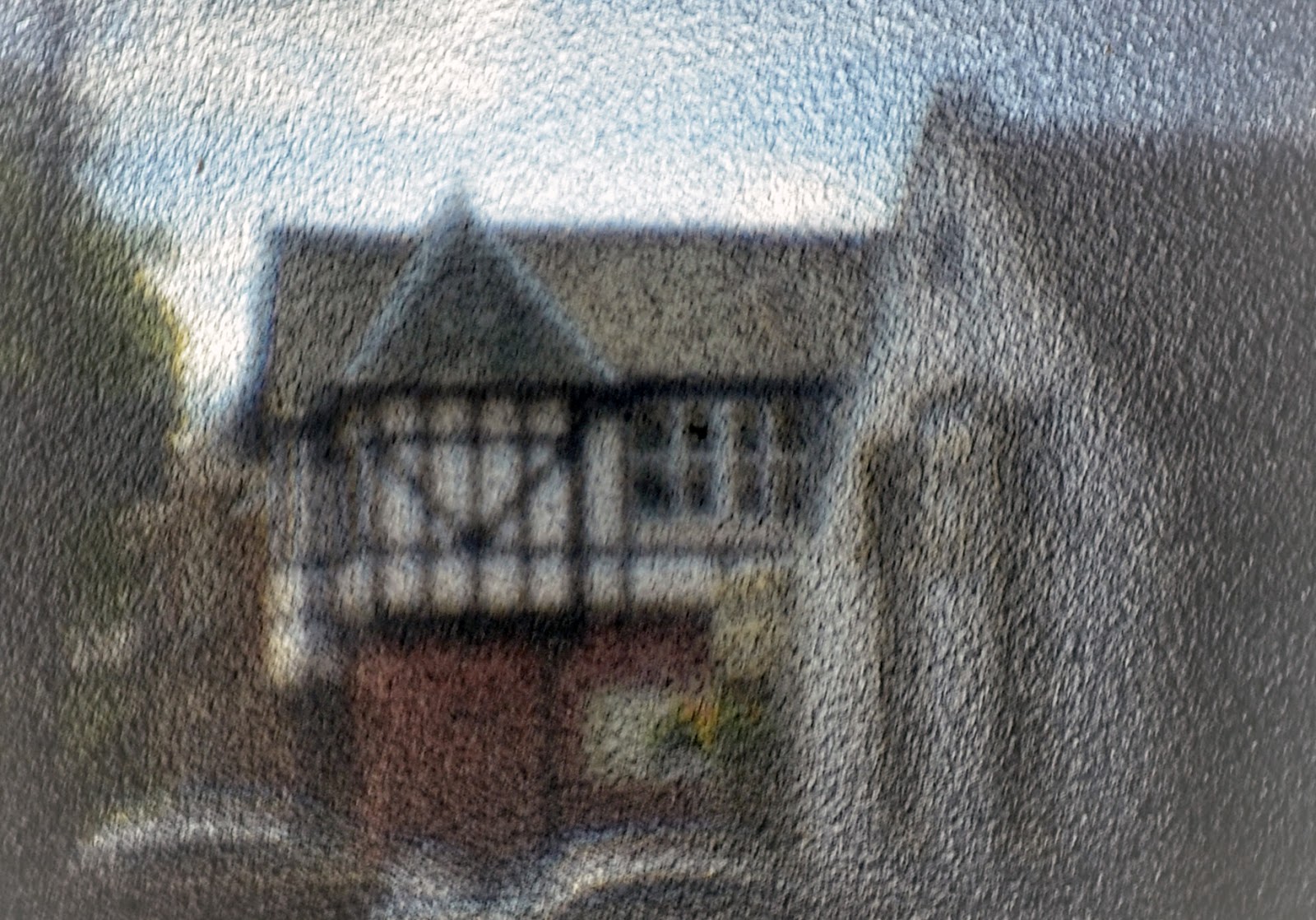 |
| Victorian Style Residence with Brick Clad Bottom |
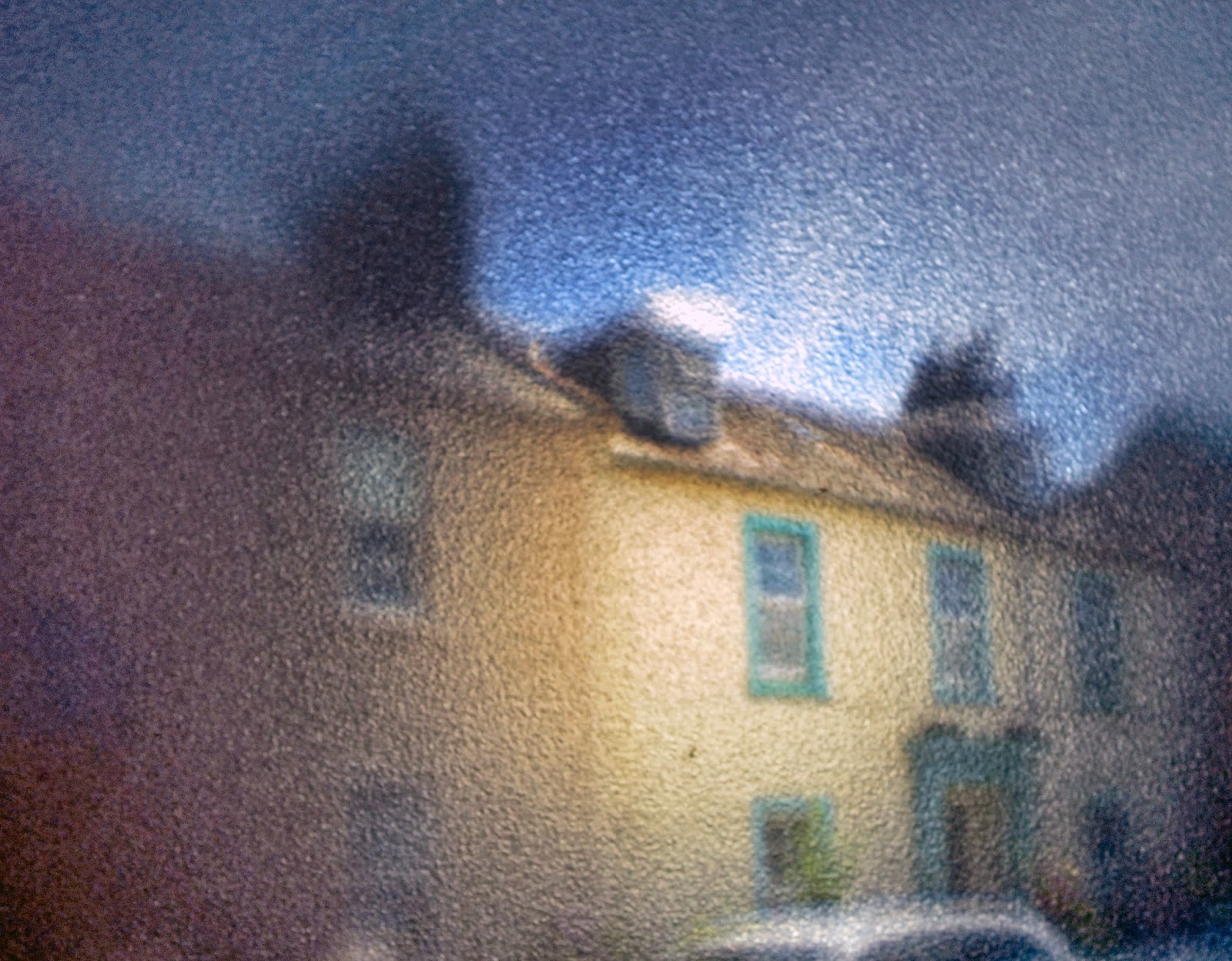 |
| Victorian Residence with Shed Dormers |
The Camera Obscura is a scientific
tool that conjured amazement and wonder in the people of the 17th
Century. It was a catalyst to
scientific, mathematical, physiological and artistic advancements. It began as a device that would cost a large
sum of money, take up an entire room and consume a large amount of time to
construct. The Camera Obscura still enchants
its viewers at room size replicas in places like Edinburgh’s Camera Obscura. People are able to receive a tour of the
entire city from one room. Although the device
was much improved by scientific instrument makers Barr and Stroud in 1947, it
uses the foundations of original Camera Obscura creators.1 Learning how to create the Camera Obscura
gave me a whole new insight into photography.
The scientific
process of the portable Camera Obscura box is relatively simple. A convex lens is put into the outside of the
box and a semi opaque sheet is placed behind it. As light passes through the lens it is
reflected onto the opaque sheet. It is
amazing to see how this technology is borrowed from that of the eye. It mimics light traveling through the lens of
our eye and focusing on the back of the retina using a much more primitive
method. Although it may not have been used in the original Camera Obscura, the
convex lens is essential to a clear picture.
One of the original Camera Obscura creators, Giovanni Battista Della
Porta wrote about the lens in his dissertation of the Camera Obscura “If you
put a small lenticular Crystal glass to the hole, you shall presently see all
things clearer, the countenances of men walking, the colors, garments, and all
things as if you stood hard by. You
shall see them with so much pleasure, that those that see it can never enough
admire it” (G.B. della Porta Magiae naturaois oibri XX (2nd ed.
1589) XVII.6)2. Men like
Robert Hooke modified the original room-based Camera Obscura to create a
portable box camera. It was advised for
use by travelers and artists.3
This is much closer to the Camera Obscura that we created.
The Camera
Obscura we made in class was at its simplest forms, using only a box, lens and
a plastic bag. When I created my own
Camera Obscura I attempted to modify the original box to improve the picture
and the ease of use. I first changed the
material of the semi-opaque screen.
During class we used a plastic bag taped to a cardboard frame. This allowed for a very large margin of error
when the image was reflected on the screen.
It is very hard to get a grocery bag to remain rigid with no ripples or
stretches. I used a semi opaque plastic
instead. This created much improvement
over the class camera, making a clearer picture. The material still requires refinement. The only semi-opaque plastic I found was textured. The texture refracted the light, making the
image less clear. A semi-opaque, flat matte
polyacrylic plastic would have most likely created a better picture.
The next
adjustment I made was to make the screen moveable from the outside of the
box. This allows the user to easily
focus the camera without having to open the box, adjust the lens close the box
and reposition the camera. I did this by
simply adding a sliding mechanism to the top of the lens. The void created by the slider is filled with
an accordion paper. As the slider moves
to one side, the paper folds and continues to block extra light from entering
the viewing chamber. This method works
fine for a first prototype, but with access to more supplies a rotating belt
and knob would have made a better slider.
These could have been internalized, preventing the issue of letting in
more light.
I also made it so
the back end of my camera can be pulled down, revealing the entire plastic
screen. This did not seem to affect the quality
of my reflected image and allowed for a larger area to be captured by my
digital camera. Near the lens, I placed
a cardboard circle in front of the lens.
This seemed to help disperse light and reduce the contrast between the
light being let in through the center of the lens and that being projected to
the outside.
The largest issue
behind the Camera Obscura I made was not the box camera’s functionality, but
the translation between object, projection and digital representation. Throughout history, the Camera Obscura has
been used as a tool for scientists to record and observe, for artists to hone
their accuracy in perspective and rendering, for young sketchers to improve
their skills and as a gateway to the chemical advancements of modern
photography. It would have been much more
practical to use the Camera Obscura to render or draw the urban environment
than to capture it digitally. An
observer can use the Camera Obscura to accurately portray proportions and
object placement and then infer or create fine details. By using the Camera Obscura and a digital
camera to capture images we were limited to very few conditions, restricting artistic
expression. The building had to be well
lit to be perceived and captured by the Camera Obscura, and even then the fine
details were mostly lost in translation.
As a tool and as an insight into photography’s history, the Camera
Obscura is as amazing and admirable as its early users proclaimed.
1
1 "Edinburgh's Camera Obscura and World of Illusions - Edinburgh's Finest Visitor Attraction - a Good Day out for All the Family." Edinburgh's Camera Obscura and World of Illusions - Edinburgh's Finest Visitor Attraction - a Good Day out for All the Fily. N.p., n.d. Web. 23 June 2014.
2
Max Planck
Institute for the History of Science. Inside the Camera Obscura – Optics and
Art under the Spell of the Projected Image. Max Planck Institute for the
History of Science. Max Planck Institute for the History of Science, 2007.
Web. 23 June 2014.
3
Max Planck
Institute for the History of Science. Inside the Camera Obscura – Optics and
Art under the Spell of the Projected Image. Max Planck Institute for the
History of Science. Max Planck Institute for the History of Science, 2007.
Web. 23 June 2014.













